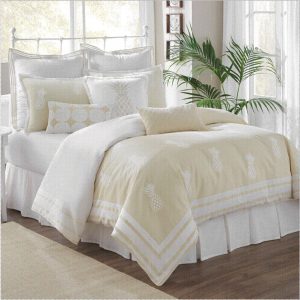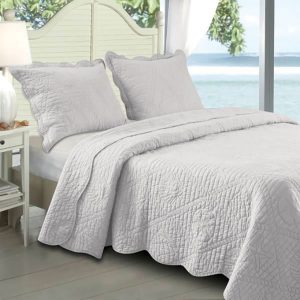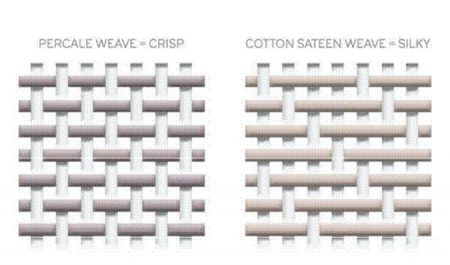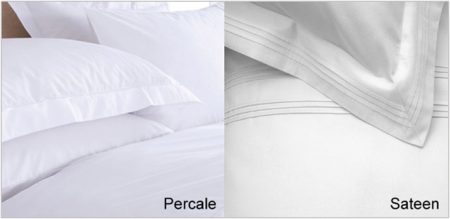Luxury Bed Linens: The Big Exposé
 A Higher Thread Count Does Not Mean You Are Getting A Better Quality Sheet!
A Higher Thread Count Does Not Mean You Are Getting A Better Quality Sheet!
By Shelagh Duncan
Can this be true? After all the hype and marketing we see about luxury bed linens, are the high-end 1000 thread count sheet sets no better than the 200TC ones we can buy at MaxiPali? Of course not—nothing is that simple, but it helps to know the facts and understand what the differences are, and that allows us to make informed decisions when buying our sheets.
 The original notion of luxury bed linens began with the designers for the Westin Hotel Group in the early 1990’s. Before that time hotels generally used coloured or patterned bedspreads because they were easier to keep clean. The people at Westin wanted to test the market to see how they could improve their guest experience as ‘sleeping well’ was the stated priority.
The original notion of luxury bed linens began with the designers for the Westin Hotel Group in the early 1990’s. Before that time hotels generally used coloured or patterned bedspreads because they were easier to keep clean. The people at Westin wanted to test the market to see how they could improve their guest experience as ‘sleeping well’ was the stated priority.
What they found is how the all white bed that we are so used to seeing now, came about. They discovered that just by changing the bedding colour to white, guests had the feeling that the rooms had been newly renovated, and also reported that they had enjoyed a good night’s sleep because they felt the white sheets identified with being clean and fresh.
The end result was that the guest felt the rooms with the all white bed, the” Heavenly Bed” as it was marketed, offered a more luxurious experience. And that was where it all began. However, startling enough, the Westin were doing their testing using sheets with a thread count of between 180 and 250, the same TC as you can get today at MaxiPali!
Things have come along since then of course, and higher and higher thread counts are available, so we are lead to believe that higher is better. Not true. The thread count, which is defined as ‘the number of horizontal and vertical threads per square inch’, is not the best way to judge the quality of your sheets. In fact there are many other things to consider, like the fibers used, their origin, and the type of weave.
The Fibers
 The majority of fibers that make up sheets are cotton, and the longer fibers the better the sheet. We know that Egyptian Cotton sets the standard of excellence because it has long fibers and in that category, Giza 45 cotton is King. It has the longest, thinnest, and strongest of fibers, and when expertly woven produces a fabric far superior to any other. As expected it is also among the most expensive.
The majority of fibers that make up sheets are cotton, and the longer fibers the better the sheet. We know that Egyptian Cotton sets the standard of excellence because it has long fibers and in that category, Giza 45 cotton is King. It has the longest, thinnest, and strongest of fibers, and when expertly woven produces a fabric far superior to any other. As expected it is also among the most expensive.
Longer fibers are ideal, because when you spin the yarn, it gives it maximum strength and a softer feel. Shorter fibers can break and feel itchy or even pill—the endings become tangled and form those annoying tiny knots.
Other good high-quality fiber options to look for are pima and supima, organic cotton, cotton-poplin, cotton-polyester, and even bamboo, and each type of fiber will have a different feel.
Cotton, bamboo, and other natural materials breathe and help keep us cool. Synthetic materials like polyester and microfiber do not: but they are durable. Blending the natural and synthetic properties in bed sheets helps give us the best of both worlds, while keeping costs affordable.
 The Weave
The Weave
Different weaves change the way a sheet feels against your skin. A percale weave is a closely woven plain weave, the classic over-and-under weave, using spun fabric made from both carded and combed yarns. This makes a sheet feel light, crisp, and cool. Percale sheeting is regarded as the finest available.
Sateen is weave construction that has more yarn surface on the face of the cloth than other basic weaves because it floats the thread over several rows at a time. This gives a softer and more lustrous look resembling satin.
So, which is better? Cotton sateen sheets are frequently softer than those with a Percale weave because a sateen weave has more warp threads on the surface. As to which is better there is no answer as it’s a matter of personal taste. Some people prefer the smoothness of the sateen weave, and others like the crispness of a percale weave and that it is the cooler fabric for our climate.
The weave will not only affect the way a sheet feels, but also the way it looks, its longevity, and its price.
Not all thread counts are created equal.
In an interview with New York Magazine, Amanda Mettler, a textile buyer for Gracious Home, said “I can guarantee a 200 thread count from Italy is better quality than a 1,000 thread count from Pakistan”. France and Italy are regarded as some of the best sheet-makers in the business, even though the fiber they use isn’t always from those particular countries (such as Egyptian cotton).
 As there no regulations for thread counts, some manufacturers have been known to exercise ‘creative math’ for their advertising, so even if a sheet is labelled with a high thread count, that can sometimes be misleading. This number can be inflated by manipulating the sheet-making process with a low-quality construction or thread, and there are manufacturing processes that boost thread count without improving overall quality. By using ultra-thin polyester blends, textile makers can squeeze more and more threads into a square inch. Furthermore, lab tests have shown that not all brands advertising Egyptian cotton are actually made from Egyptian cotton, so be skeptical of any sheets that appear to be exceptionally well priced.
As there no regulations for thread counts, some manufacturers have been known to exercise ‘creative math’ for their advertising, so even if a sheet is labelled with a high thread count, that can sometimes be misleading. This number can be inflated by manipulating the sheet-making process with a low-quality construction or thread, and there are manufacturing processes that boost thread count without improving overall quality. By using ultra-thin polyester blends, textile makers can squeeze more and more threads into a square inch. Furthermore, lab tests have shown that not all brands advertising Egyptian cotton are actually made from Egyptian cotton, so be skeptical of any sheets that appear to be exceptionally well priced.
As a general rule, buy a minimum 200-thread count sheet, and know that anything over an 500-thread count really doesn’t matter. Remember, as in everything, price and quality definitely go together—you get what you pay for.
Now you are ready to create your own ‘Heavenly Bed’ look at home! We spend up to 30% of our lives in bed so make it a wonderful experience.
Sweet dreams!
Until next time,
Shelagh
Royal Palm Interiors – Uvita – 2743-8323
royalpalminteriors.com
Like us on facebook.com/RoyalPalmInteriors

